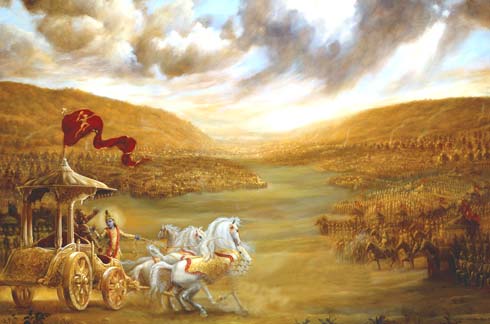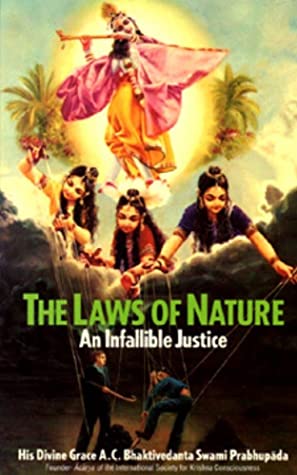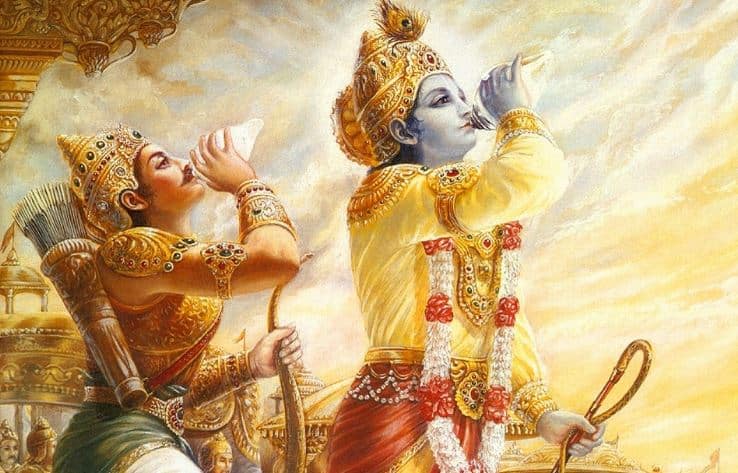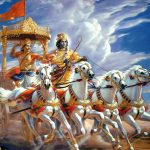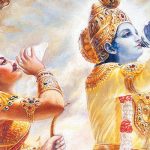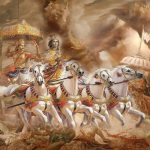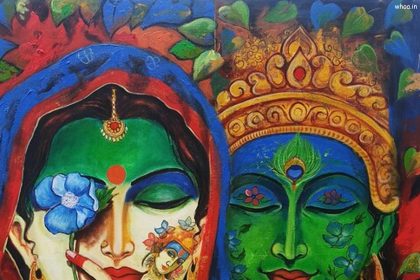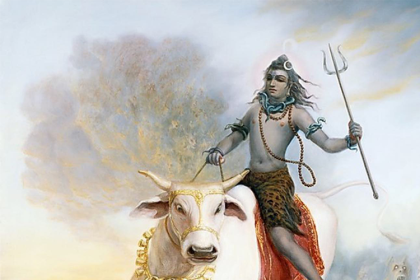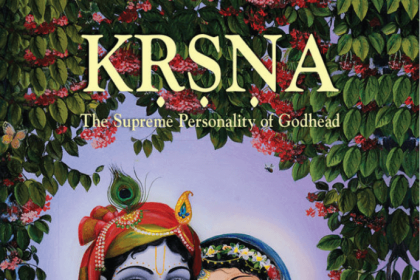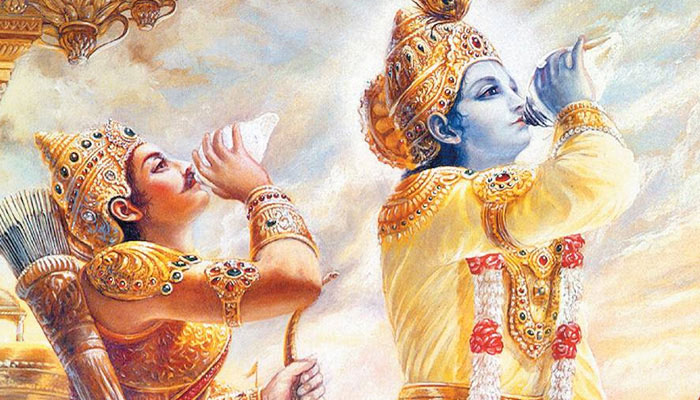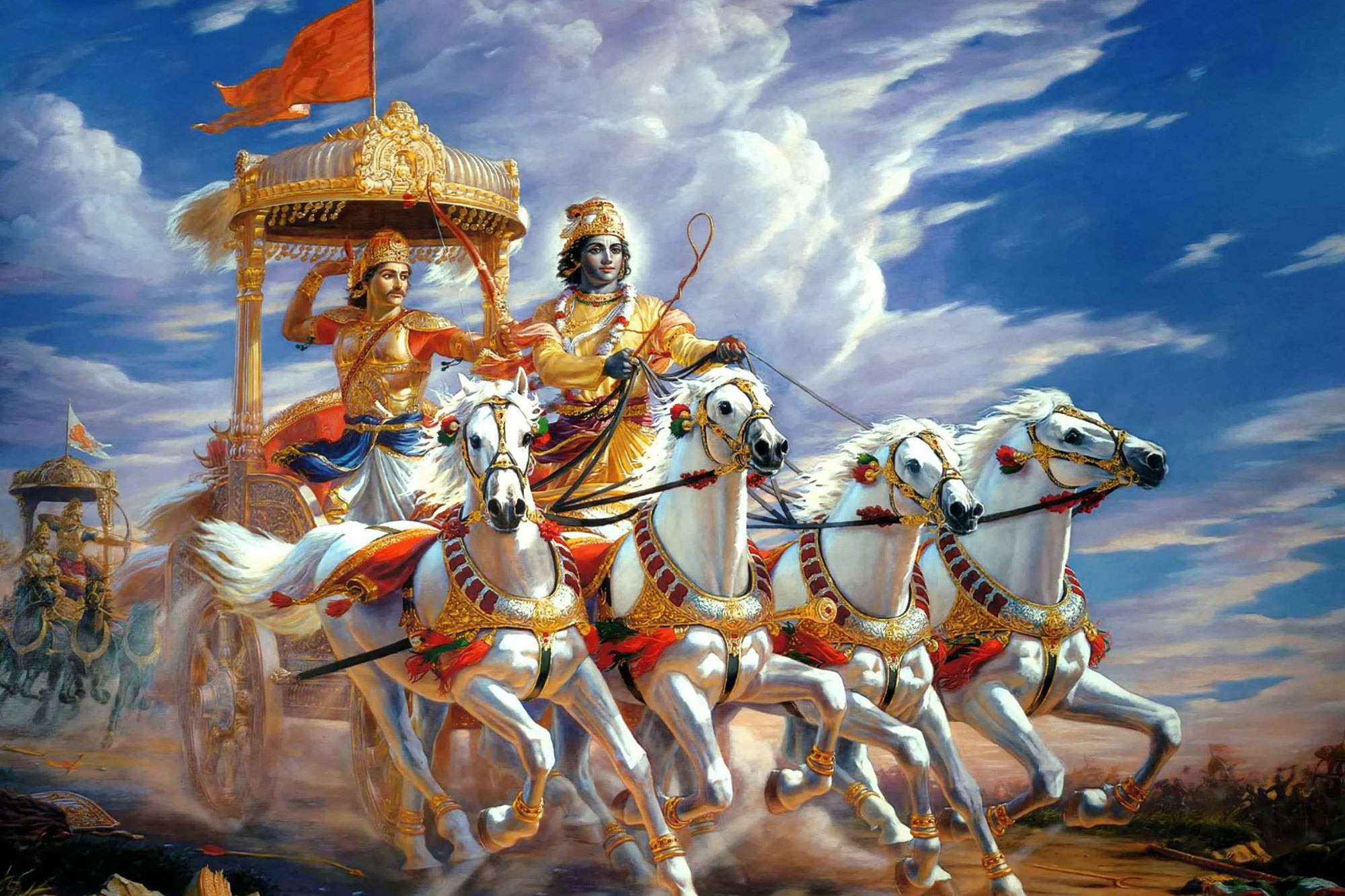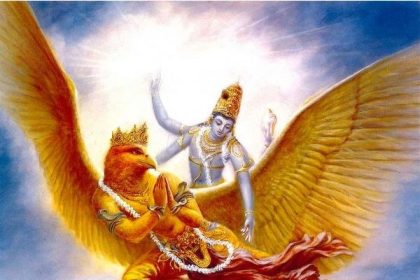TEXT 6
ajo ‘pi sann avyayātmā
bhūtānām īśvaro ‘pi san
prakṛtiṁ svām adhiṣṭhāya
sambhavāmy ātma-māyayā
SYNONYMS
ajaḥ—unborn; api—although; san—being so; avyaya—without deterioration; ātmā—body; bhūtānām—of all those who are born; īśvaraḥ—the Supreme Lord; api—although; san—being so; prakṛtim—in the transcendental form; svām—of Myself; adhiṣṭhāya—being so situated; sambhavāmi—I do incarnate; ātma-māyayā—by My internal energy.
TRANSLATION
Although I am unborn and My transcendental body never deteriorates, and although I am the Lord of all living entities, by My internal energy I still appear in every millennium in My original transcendental form.
PURPORT
The Lord has spoken about the peculiarity of His birth: although He may appear like an ordinary person, He remembers everything of His many, many past “births,” whereas a common man cannot remember what he has done even a few hours before. If someone is asked what he did exactly at the same time one day earlier, it would be very difficult for a common man to answer immediately. He would surely have to dredge his memory to recall what he was doing exactly at the same time one day before. And yet, men often dare claim to be God, or Kṛṣṇa. One should not be misled by such meaningless claims. Then again, the Lord explains His prakṛti, or His form. Prakṛti means “nature,” as well as svarūpa, or “one’s own form.” The Lord says that He appears in His own body. He does not change His body, as the common living entity changes from one body to another. The conditioned soul may have one kind of body in the present birth, but he has a different body in the next birth. In the material world, the living entity has no fixed body but transmigrates from one body to another. The Lord, however, does not do so. Whenever He appears, He does so in the same original body, by His internal potency. In other words, Kṛṣṇa appears in this material world in His original eternal form, with two hands, holding a flute. He appears exactly in His eternal body, uncontaminated by this material world. Although He appears in the same transcendental body and is Lord of the universe, it still appears that He takes His birth like an ordinary living entity. And although His body does not deteriorate like a material body, it still appears that Lord Kṛṣṇa grows from childhood to boyhood and from boyhood to youth. But astonishingly enough He never ages beyond youth. At the time of the Battle of Kurukṣetra, He had many grandchildren at home; or, in other words, He had sufficiently aged by material calculations. Still He looked just like a young man twenty or twenty-five years old. We never see a picture of Kṛṣṇa in old age because He never grows old like us, although He is the oldest person in the whole creation—past, present, and future. Neither His body nor His intelligence ever deteriorates or changes. Therefore, it is clear that in spite of His being in the material world, He is the same unborn, eternal form of bliss and knowledge, changeless in His transcendental body and intelligence. Factually, His appearance and disappearance are like the sun’s rising, moving before us, and then disappearing from our eyesight. When the sun is out of sight, we think that the sun has set, and when the sun is before our eyes, we think that the sun is on the horizon. Actually, the sun is always in its fixed position, but owing to our defective, insufficient senses, we calculate the appearance and disappearance of the sun in the sky. And because Lord Kṛṣṇa’s appearance and disappearance are completely different from that of any ordinary, common living entity, it is evident that He is eternal, blissful knowledge by His internal potency—and He is never contaminated by material nature. The Vedas also confirm that the Supreme Personality of Godhead is unborn yet He still appears to take His birth in multimanifestations. The Vedic supplementary literatures also confirm that even though the Lord appears to be taking His birth, He is still without change of body. In the Bhāgavatam, He appears before His mother as Nārāyaṇa, with four hands and the decorations of the six kinds of full opulences. His appearance in His original eternal form is His causeless mercy, bestowed upon the living entities so that they can concentrate on the Supreme Lord as He is, and not on mental concoctions or imaginations, which the impersonalist wrongly thinks the Lord’s forms to be. The word māyā, or ātma-māyā, refers to the Lord’s causeless mercy, according to the Viśva-kośa dictionary. The Lord is conscious of all of His previous appearances and disappearances, but a common living entity forgets everything about his past body as soon as he gets another body. He is the Lord of all living entities because He performs wonderful and superhuman activities while He is on this earth. Therefore, the Lord is always the same Absolute Truth and is without differentiation between His form and self, or between His quality and body. A question may now be raised as to why the Lord appears and disappears in this world. This is explained in the next verse.


